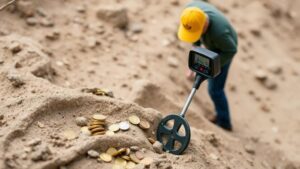Selling at Local Flea Markets and Trade Shows: Best Practices
Selling at Local Flea Markets and Trade Shows: Best Practices
Selling at local flea markets and trade shows can be a lucrative venture for entrepreneurs and small business owners. These marketplaces provide a unique opportunity to connect with customers, showcase products, and build brand awareness in a face-to-face setting. But, succeeding in this environment requires preparation, strategy, and adaptability. This article will outline best practices for selling at local flea markets and trade shows, helping vendors to enhance their effectiveness and achieve higher sales.
Understanding Your Audience
Before participating in a flea market or trade show, it is crucial to understand the target audience. Knowing who frequents these events can inform product selection and display strategies. Market research can help you tailor your offerings to meet the preferences and needs of potential customers. For example, families with children may look for different products compared to young adults or seniors.
- Conduct surveys or informal interviews at previous events to gather insights.
- Observe competitors to identify trends and popular items.
According to the Specialty Food Association, 78% of consumers prefer to shop local for unique products, indicating a strong interest in local vendors at flea markets. This statistic underscores the importance of aligning your products with the values and interests of the community.
Product Selection and Pricing
Choosing the right products is essential for success at flea markets and trade shows. Consider including both high-demand items and unique, niche products that differentiate your brand from competitors. Seasonal items, handmade goods, and local artisan products often perform well at these events.
- Research trending items in your niche; websites like Pinterest or Etsy can provide inspiration.
- Be mindful of pricing. Your prices must cover costs while remaining attractive to the demographic.
A case study of a local artisan at a flea market revealed that setting prices according to market research rather than impulse led to a 30% increase in sales. Keeping items moderately priced while offering bundle deals can attract budget-conscious shoppers, creating a win-win scenario.
Effective Booth Design
The layout and design of your booth can significantly influence customer engagement. An inviting and organized space can draw in foot traffic and encourage browsing. Here are some design best practices:
- Use eye-catching signage that clearly states your brand and offerings.
- Incorporate attractive displays that highlight key products without overcrowding the space.
- Provide a welcoming atmosphere with comfortable interaction areas.
According to the Event Marketing Institute, well-designed booths can increase engagement by up to 45%. A practical example can be drawn from a vendor who utilized vibrant colors and creative displays to attract customers. implemented themed decorations that aligned with the products, which not only drew people in but also encouraged them to take photographs and share them on social media.
Sales Techniques and Customer Interaction
Engaging effectively with customers can make a memorable impression, driving sales and fostering loyalty. Active selling involves more than just talking to potential buyers; it requires listening and responding to their needs. Here are some techniques:
- Greet customers warmly and ask open-ended questions to build rapport.
- Show products live if feasible; this can lead to immediate purchases.
- Use storytelling techniques to create emotional connections with your products.
A report by Nielsen indicates that 92% of consumers trust recommendations from individuals over brands. Employing storytelling, a vendor described their handmade scarves as products inspired by travels to various textile markets, which resonated with customers desires for authenticity and connection.
Follow-Up and Customer Relationship Management
Acquiring customers is only the first step; maintaining relationships is crucial for sustained success. Useing a customer relationship management (CRM) strategy can nurture leads and turn first-time buyers into repeat customers.
- Collect email addresses to send follow-up messages and promotions.
- Encourage social media engagement; create hashtags to connect with customers online.
For example, a vendor specializing in handcrafted jewelry saw a 50% increase in repeat sales after they began engaging customers on Instagram. By inviting customers to share photos of their purchases with designated hashtags, they created community and loyalty around their brand, promoting further sales through word-of-mouth.
Conclusion
Successful selling at local flea markets and trade shows requires a blend of strategic planning and interactive customer engagement. By understanding your audience, selecting attractive products, designing an engaging booth, employing effective sales techniques, and fostering long-term relationships, you can maximize your potential for success. As you transition into this marketplace, remember: each interaction is an opportunity to make a lasting impression and grow your brand.
Take the insights shared here and implement them in your next venture at a flea market or trade show. By continuously adapting to the needs of your customers and evolving your approach, you can build a thriving presence in this vibrant marketplace.


